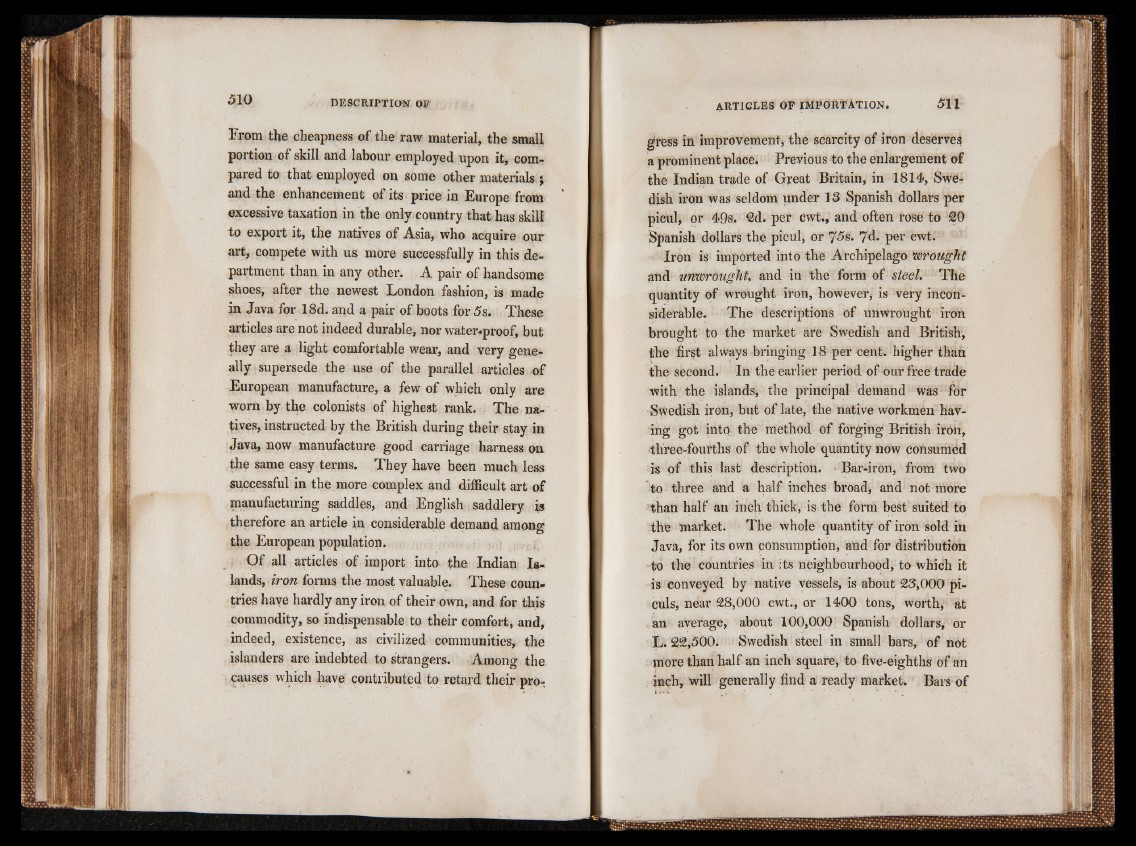
From the cheapness of the raw material, the small
portion of skill and labour employed upon it, compared
to that employed on some other materials j
and the enhancement of its price in Europe from
excessive taxation in the only country that has skill
to export it, the natives of Asia, who acquire our
art, compete with us more successfully in this department
than in any other. A pair of handsome
shoes, after the newest London fashion, is made
in Java for 18d. and a pair of boots for 5s. These
articles are not indeed durable, nor water-proof, but
they are a light comfortable wear, and very gene-
ally supersede the use of the parallel articles of
European manufacture, a few of which only are
worn by the colonists of highest rank. The natives,
instructed by the British during their stay in
Java, now manufacture good carriage harness on
the same easy terms. They have been much less
successful in the more complex and difficult art of
manufacturing saddles, and English saddlery is
therefore an article in considerable demand among
the European population.
Of all articles of import into the Indian Islands,
iron forms the most valuable. These countries
have hardly any iron of their own, and for this
commodity, so indispensable to their comfort, and,
indeed, existence, as civilized communities, the
islanders are indebted to strangers. Among the.
causes which have contributed to retard their progress
in improvement, the scarcity of iron deserves
a prominent place. Previous to the enlargement of
the Indian trade of Great Britain, in 1814, Swedish
iron was seldom under 13 Spanish dollars per
picul, or 4Qs. 2d. per cwt., and often rose to 20
Spanish dollars the picul, or 75s. 7d. per cwt.
Iron is imported into the Archipelago 'wrought
and unwrought, and in the form of steel. The
quantity of wrought iron, however, is very inconsiderable.
The descriptions of unwrought iron
brought to the market are Swedish and British,
the first always bringing 18 per cent, higher than
the second. In the earlier period of our free trade
with the islands, the principal demand was for
Swedish iron, but of late, the native workmen hav-
ing got into the method of forging British iron,
three-fourths of the whole quantity now consumed
is of this last description. Bar-iron, from two
to three and a half inches broad, and not more
than half an inch thick, is the form best suited to
the market. The whole quantity of iron sold in
Java, for its own consumption, and for distribution
to the countries in its neighbourhood, to which it
is conveyed by native vessels, is about 23,000 piculs,
near 28,000 cwt., or 1400 tons, worth, at
an average, about 100,000 Spanish dollars, or
L. 22,500. Swedish steel in small bars, of not
more than half an inch square, to five-eighths of an
inch, will generally find a ready market. Bars of